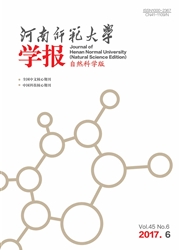

 中文摘要:
中文摘要:
运用实证方法,从结构和动态两个视角考察了沪深股市之间的异同及作用关系。通过总体经验模式分解(EEMD)发现:沪深股指是由高频、低频和趋势项三类分量组成,且各结构分量在总量水平中的贡献不同。其中,深市趋势项对总量的贡献率高于沪市,反映出深市的走势较沪市更加平稳;沪市高低频分量对总量的贡献率高于深市,表明沪市的波动性大于深市。同时状态空间模型显示,沪深股市趋势项分量之间的作用关系体现了沪深股市收益率双向传导,沪强深弱的股票市场格局。低频分量之间的作用关系则表明我国股市的调控能力需进一步提高。
 英文摘要:
英文摘要:
In this paper,we investigate the relationship of Shanghai and Shenzhen stock market from the structure and dynamics perspective.Through the ensemble empirical mode decomposition,Shanghai and Shenzhen Stock Index are composed of high-frequency,low frequency and trends,and the contribution rates for each structural component are different.The contribution of Shenzhen stock market' trend is higher than Shanghai stock market.It means that the trend of Shenzhen is more stable than Shanghai Stock Exchange.The contribution of Shanghai stock market' high-low frequency component is higher than that of the Shenzhen stock market.It means that Shanghai is more volatile than Shenzhen Stock Exchange.At the same time,the state-space model shows that the relationship of the trends of Shanghai and Shenzhen stock market reflect two-way transmission on the rate of return and more robust stock market of shanghai.The relationships of low-frequency component mean that stock market' regulation capacity needs to be improved.
 同期刊论文项目
同期刊论文项目
 同项目期刊论文
同项目期刊论文
 期刊信息
期刊信息
